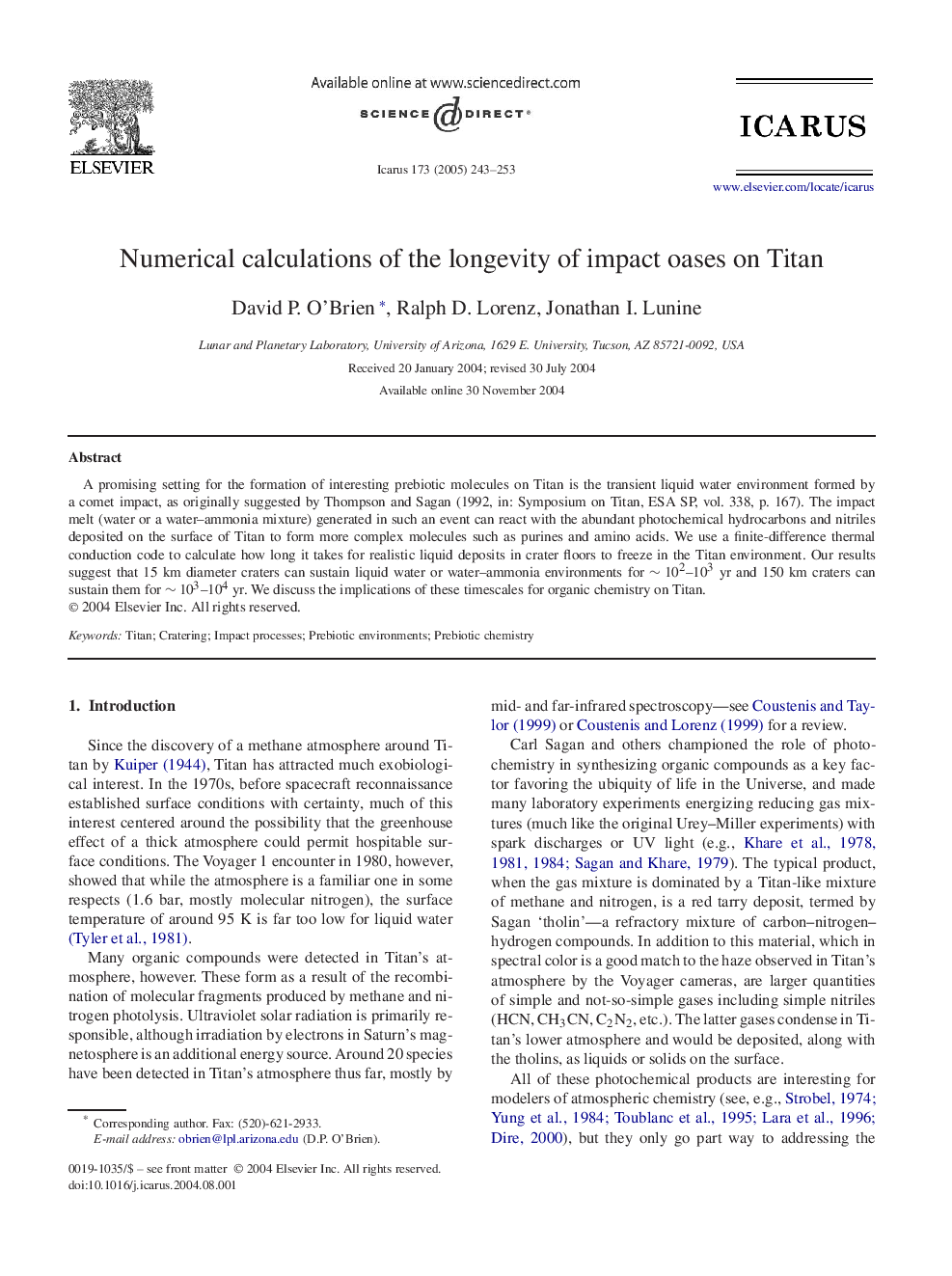| Article ID | Journal | Published Year | Pages | File Type |
|---|---|---|---|---|
| 10702005 | Icarus | 2005 | 11 Pages |
Abstract
A promising setting for the formation of interesting prebiotic molecules on Titan is the transient liquid water environment formed by a comet impact, as originally suggested by Thompson and Sagan (1992, in: Symposium on Titan, ESA SP, vol. 338, p. 167). The impact melt (water or a water-ammonia mixture) generated in such an event can react with the abundant photochemical hydrocarbons and nitriles deposited on the surface of Titan to form more complex molecules such as purines and amino acids. We use a finite-difference thermal conduction code to calculate how long it takes for realistic liquid deposits in crater floors to freeze in the Titan environment. Our results suggest that 15 km diameter craters can sustain liquid water or water-ammonia environments for â¼102-103 yr and 150 km craters can sustain them for â¼103-104 yr. We discuss the implications of these timescales for organic chemistry on Titan.
Related Topics
Physical Sciences and Engineering
Earth and Planetary Sciences
Space and Planetary Science
Authors
David P. O'Brien, Ralph D. Lorenz, Jonathan I. Lunine,
